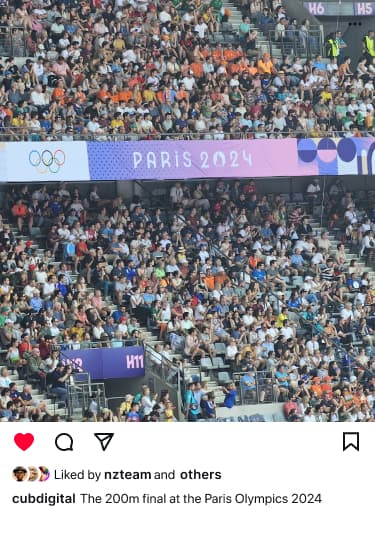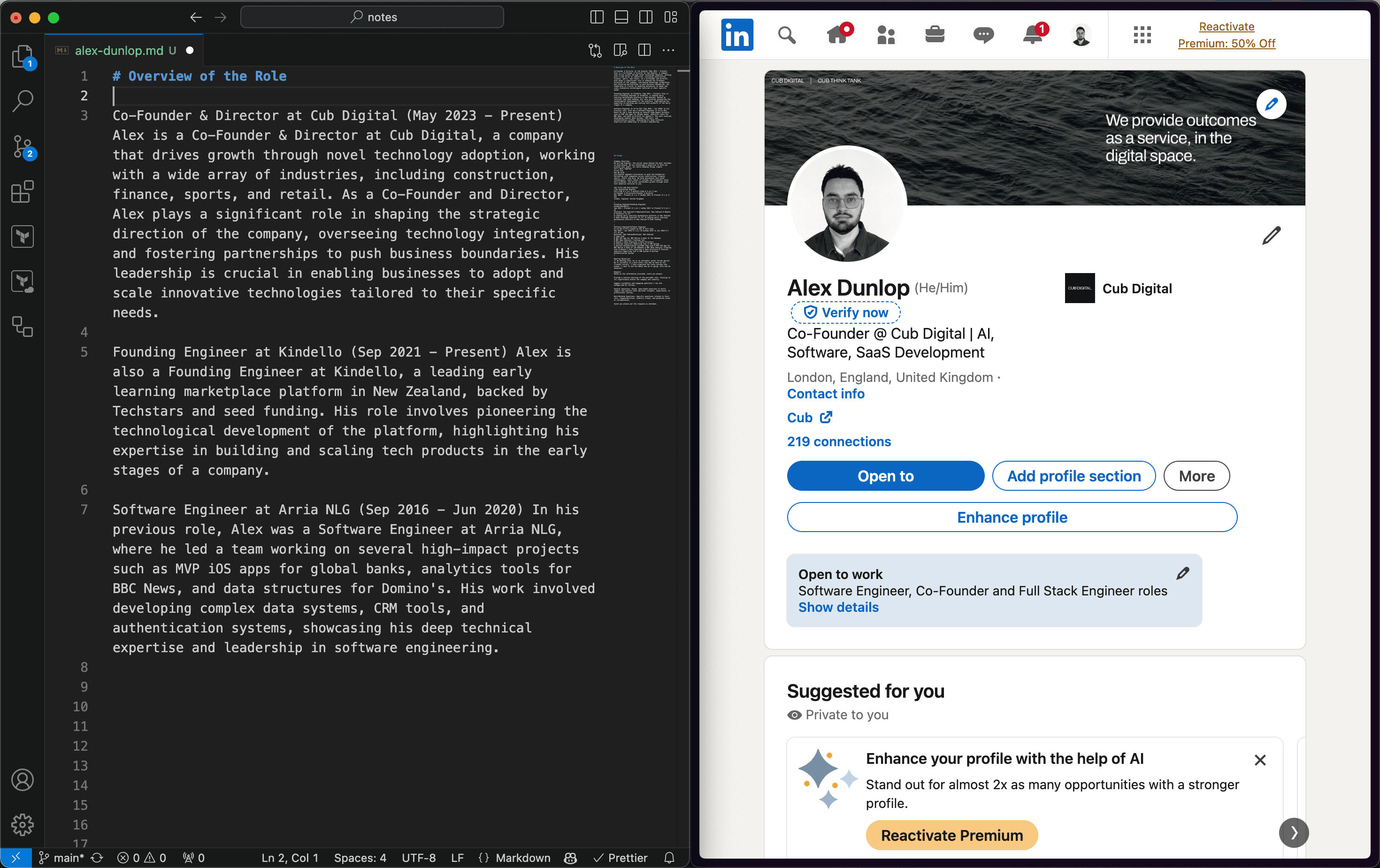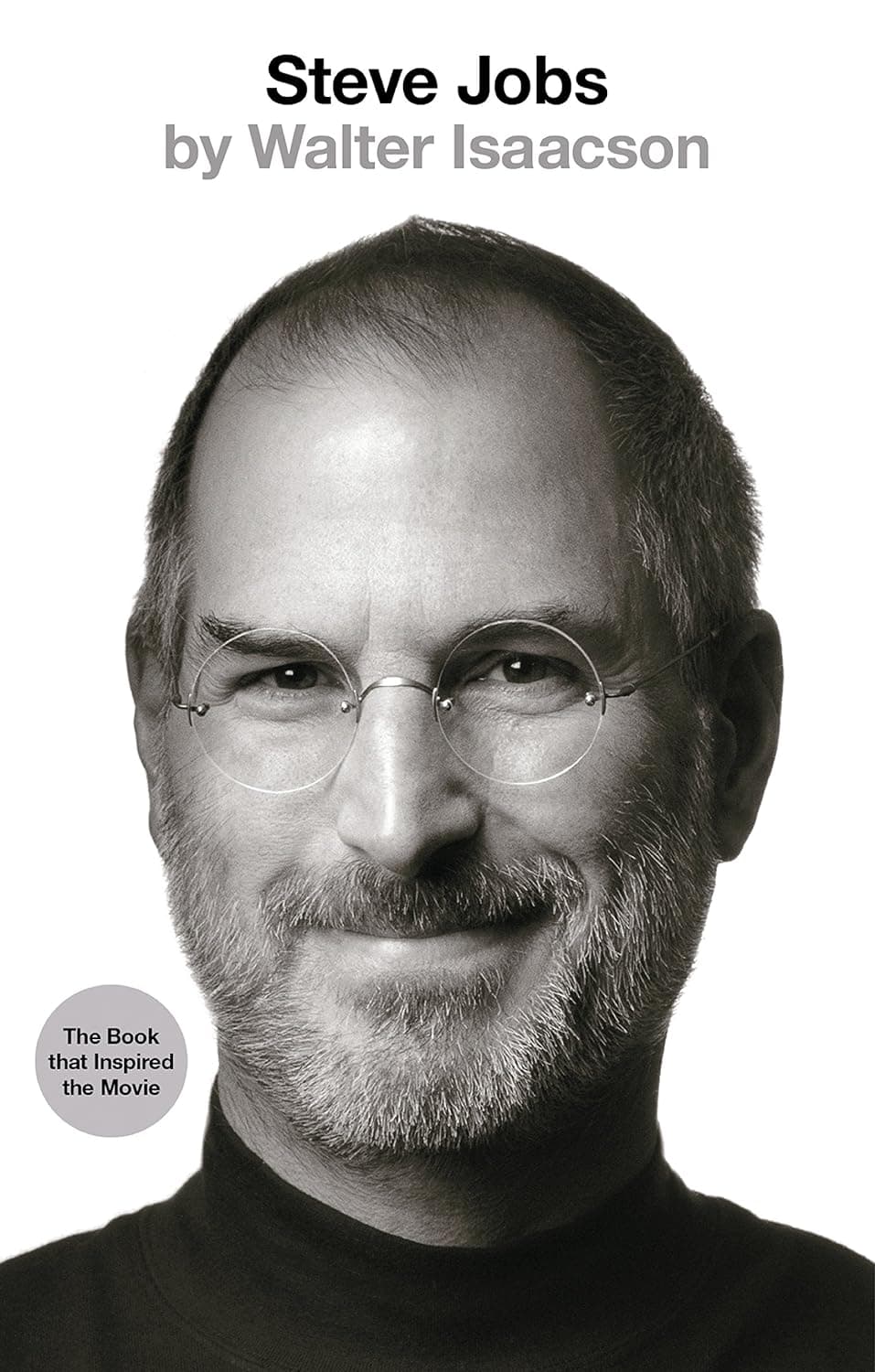How AI is helping athletes reach their full potential

GET THE #1 EMAIL FOR EXECUTIVES
Subscribe to get the weekly email newsletter loved by 1000+ executives. It's FREE!

I was asked this question on an panel at the Athlete leaders network.
Question: How is AI being used to improve individual athletic performance, and what specific insights can it provide that traditional methods can’t?
I'm going to focus on one element of this question, which is how we can use a tool called computer vision to help athletes improve their performance.
I've generated an AI image of a basketballer and for the sake of this post let's pretend that they have just shot the basketball.

Now with a clever technique called markerless tracking, an AI system is able to automatically detect where the joints of the body are located. This is done by using a neural network that has been trained on thousands of images of people in different poses.

Each dot in the image above represents a particular marker on the body and the line between the dots represents a bone in the body. This is how the AI system is able to understand the pose of the person in the image.
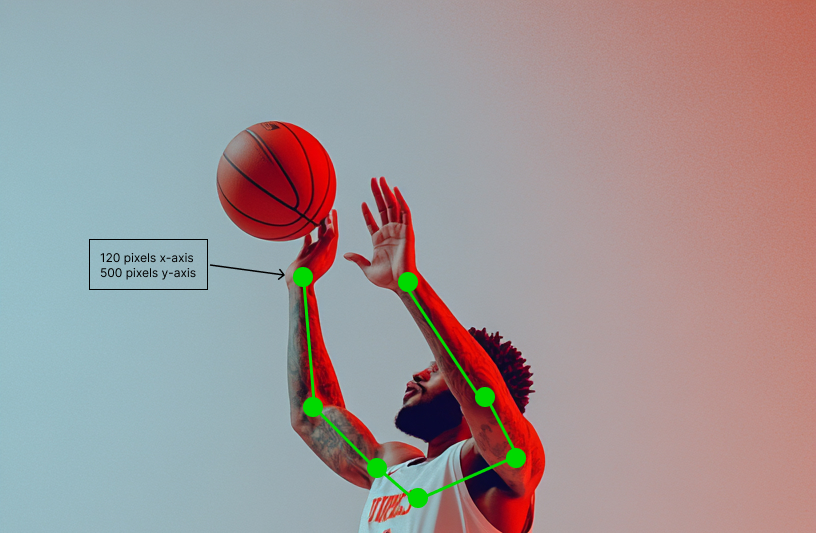
If we zoom on the above image, each joint gives us a pixel coordinate so that we know where it is located.
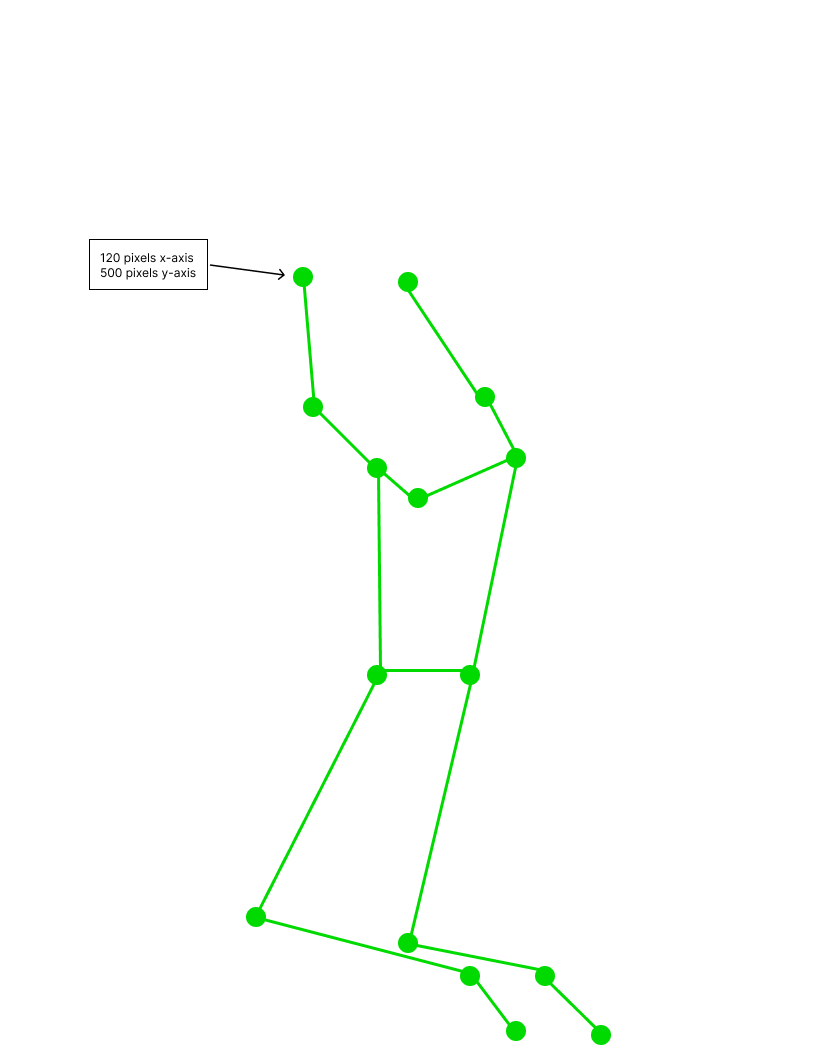
Now we could strip away the image and just look at what the AI system give us.
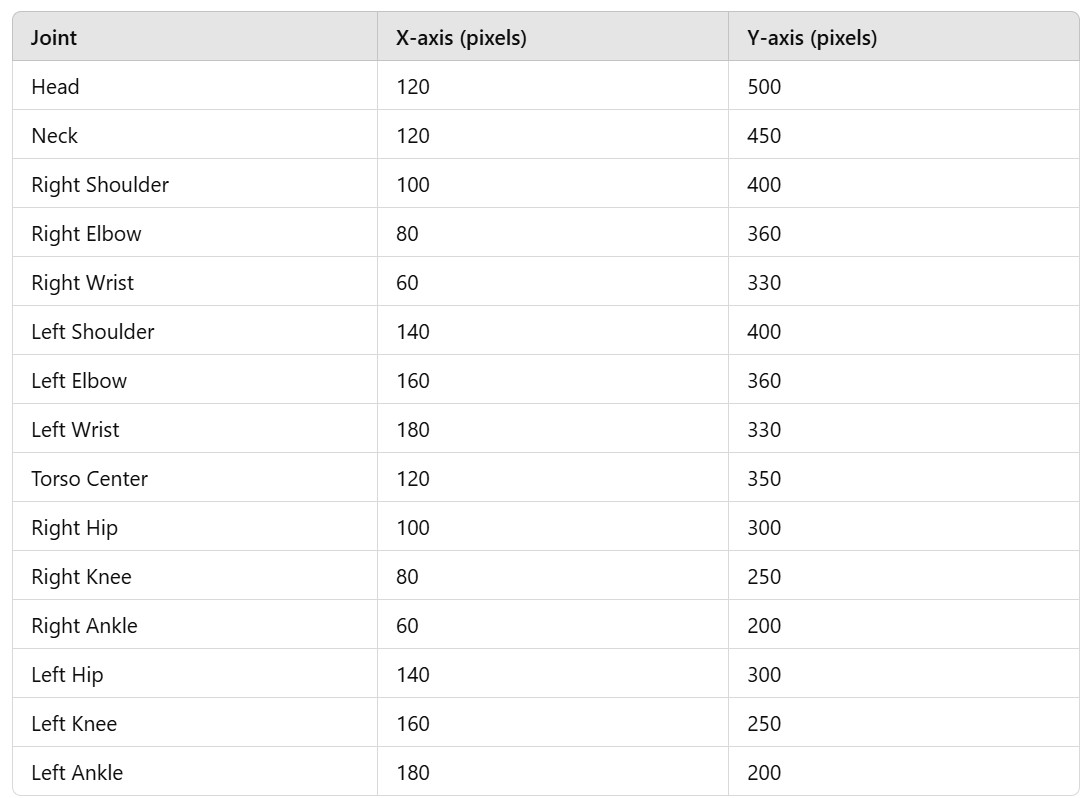
Basically we get a table of all of the coordinates of the joints.
Now the interesting thing about this:
- You get data for each person in the frame.
- You get data for each frame.
So if you have one person shooting a basketball, and you collect 18 joints and there is 30 frames per second, you get 540 data points per second!
Multiply the number of players and you can see how quickly this data can grow.
Not only that, but we can calculate the angles between the joints to give us even more information about the pose.

But where these dots become fun is that you can now start to annotate them with other elements, potentially labelling the shot as either successful or not.
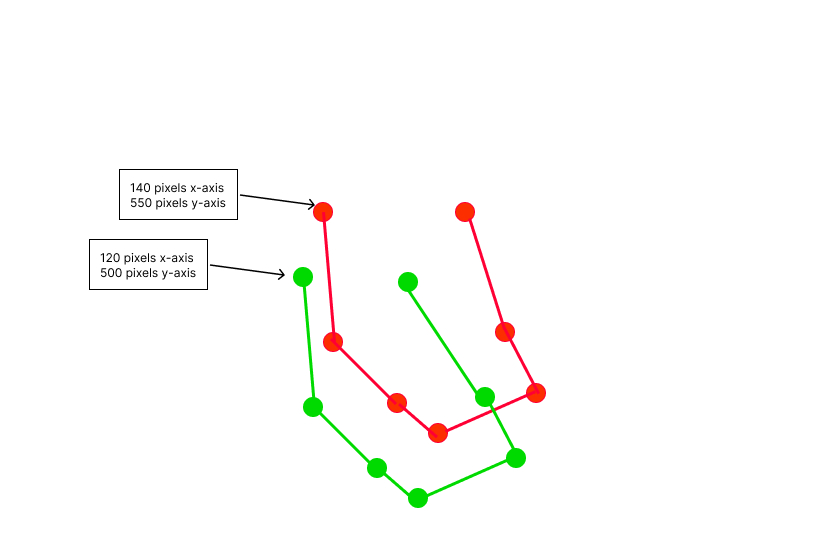
So in the case above we have 2 shots, one successful and one not successful. We see that the not successful shot has a different pose to the successful shot. The arm is higher and the angles are slightly different.
The good thing about this system though is that we could analyse not just one shot but potentially hundreds of shots.

Now this is getting closer to an insight. In this case we can see that everytime the athlete misses their hands are too high! This is a simple insight that could be used to improve the athlete's performance.
Now what you could do is have a cue that tells the athlete to keep their hands lower. This could be a visual cue.
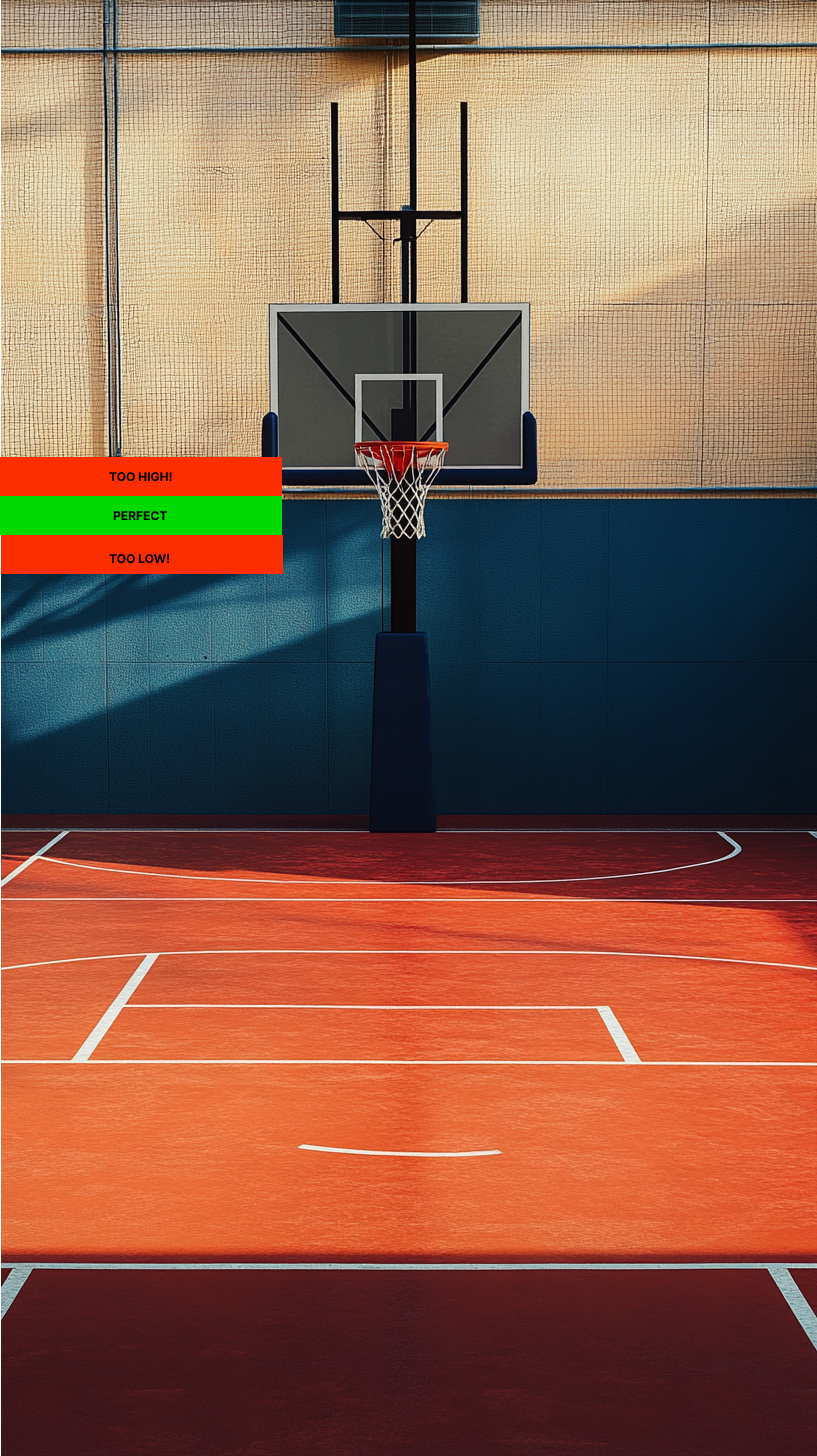
The athlete would then go and film their training session and then they now have a tangible and targeted way to improve their performance.
Sports are tricky because everything happens so fast and the movements are very precise and so computer vision unlocks an entirely new language that can be used to improve performance.
Data data everywhere
All of this data from just one action in a basketball game. Now think about all of the different movements in basketball and then all of the different sports that could be analysed in this way. There is an endless amount of data that could be collected and analysed.
The work in this domain is still relatively new so I expect in the future that we will see more and more insights that can be generated from this data.
What the data allows you to do
The fun thing I like about these markers is that you get to start asking interesting questions. For example:
- What is the optimal arm angle for a basketball shot?
- How does the angle of the arm affect the shot?
- How does the angle of the legs affect the shot?
- How does the angle of the body affect the shot?
All of these questions can be asked if you have a nice dataset.
Of course the risk here is that you start reading into the tea leaves and jumping to strange conclusion. That is true of any data analysis though.
Further reading
- How stats are changing basketball
- Book Recommendation - Game Changers









